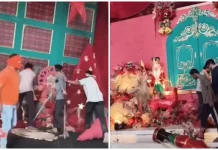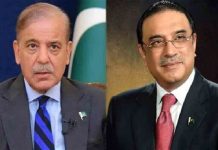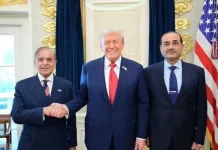- — Doval’s Beijing trip last week changed Delhi’s plan of China containment via border standoff
- — Standoff plan designed by a team headed by former Indian Army Chief VK Singh
- — After getting reports of China going for ‘Iron Fist’, Delhi begins withdrawing troops from Chinese territory
- — Reinforced Infantry battalions, Amour Squadrons, MBRL vehicles withdrawn from forward areas, SU 30s from Mechuka, DBO
- — Troops from behind LAC also being moved back to original positions, locations by Saturday night
- — Merely 40 to 50 Indian troopers left behind for supervision of certain equipment
- — Reports indicate presence of some Indian formations at Bhutan Army camp at Zompelri near the Jampheri Ridge
- — Indian army units at Zompelri Camp reported to be having Infantry companies, SATA team, BPM Infantry vehicles, MBRLBs etc
 By Makhdoom Babar,
By Makhdoom Babar,
(Editor-in-Chief)
With additional reporting from Christina Palmer & Anjali Sharma
NEW DELHI- After almost a 2-month long standoff with China across Line of Actual Control (LAC) when Delhi marched its infantry battalion into Chinese territory at Doklam, India has finally submitted to China and has started an unannounced pullout of its troops, withdrawing around an infantry battalion, an amour squadron and some back up Infantry column with BMP vehicles, reveal the investigations of The Daily Mail.
These investigations indicate that right in accordance with the Anglo-Chinese Convention of 1890 and also in the backdrop of Sino-Bhutan border talks of 1984, China, informed India and Bhutan on May 18th, 2017 and again on June 8th, 2007 that it was carrying out a road construction project for civilian population on its own side of border at Doklam. However, to everybody’s dismay, on June 18, 2017, India stormed its Infantry soldiers into Chinese territory, crossing International border at Sikkim Sector and obstructed the road construction work by Chinese workers, inside Chinese territory and created a standoff. The investigations indicate that the Indian move was masterminded by Indian NSA Ajit Kumar Doval and was part of China containment policy, headed by US. The investigations also indicate that the basic purpose behind creating the border standoff with China was to seek an immediate military reaction by China and then to exploit the same through global and especially Indian and Western media to tarnish China’s image as custodian of global development and to rather portray it as a militarily hostile country with hegemonic designs. On the other side, under the special instructions of CPC Chairman and ultimate head of Peoples Liberation Army (PLA) President Xi Jinping, PLA opted to follow restrained but made comprehensive readiness to confront any further aggression with at least two Brigades of PLA’s Tibet Command on full alert.
The Daily Mail’s investigations indicate that the Doklam or Dong Lang standoff plan was orchestrated by Ajit Doval and former Indian Army Chief VK Singh who is also a cabinet member of Modi’s Cabinet at New Delhi and holds the portfolio of Minister of State for External Affairs with a team, comprising some former officials of Military Operations Directorate of Indian army and top officials from Tri Services and Military Intelligence as well as head of RAW
These investigations however reveal that the things got drastically changed after Indian NSA Ajit Kumar Doval paid a formal visit to Beijing for the BRICS security meeting in the last week of July. On the sidelines of the meeting, he launched a secret survey to assess the mood, preparedness and plans of Beijing over standoff at Doklam while he also got some clear tone from the hosts, though no formal discussion over this issue was held. Doval also got a brief yet comprehensive note from Indian Defense Attaché at India’s Beijing Embassy. The sources, close to the development, say that the DA’s brief was more than enough enough for NSA Doval to change his mental attitude at the meeting next morning . These sources claim that the note by the Indian DA had also mentioned that PLA’s warfare top brass maintaining a very close liaison for sufficient input from their counterparts in Pakistan. The sources say that this particular paragraph in the DA’s note was very upsetting for Doval and that was why after reaching back Delhi, NSA was seen in a very dejected and disappointed mood and held two to three meetings over the issue in next 24 hours after landing back at New Delhi. In these meetings, he had mentioned that China had taken the issue at ‘the most serious’ level and the input from their Pakistani counterparts had made things even more troublesome. The sources also say that he did not find anything positive from the Russian and South African counterparts at the BRICS security moot. He also sought a detailed briefing from the Chief of Indian Military Intelligence over the latest situation, which was not found very encouraging either.
The Daily Mail Investigations indicate that NSA Doval and General VK Singh were apprised by the commanders of 33rd Corps and 14th Corps that the backup troops and mechanized columns, stationed near Eastern Kemeng, at Sumdorong Chu, Nathu La and Tawang were also facing acute threat of rainwater as heavy rains were causing havoc and the backup plan for water resistance had not come handy while the Chinese side was having two full brigades of PLA’s Tibet Military Command completely ready for strike with un-estimated backup arrangements.
The Daily Mail’s investigations further indicate that on Thursday, after a high level meeting at Prime Minister’s Office at New Delhi, which was attended not only by top brass of Tri Services of India but also by the Chief of Research and Analysis Wing, it was decided to soft at Doklam and withdraw not only the troops from Doklam but also quickly pullout the backup Air and Ground Support but in a very invisible and precise style, with starting the process from Saturday night and to complete it in three to four days to avoid any media notice. The withdrawal of SU-30s and C-130Js from Mechuka and Daulat Beg Oldi bases was also decided.
However, some other sources, privy to the development, revealed that just a day before the withdrawal process was to be formally initiated, a panic crept into the Indian camps as the Military intelligence indicated PLA had given a green signal to its Tibet Command to use the Iron Fist to through the intruders out of the territory. These sources say that after this development, the commanders decided to implement withdrawal plan right then and there, without waiting to do it as per planned. The sources say that under the new scenario, around 700 troopers were moved out of the Doklam area while some 40 to 50 were left behind to pack and supervise some equipment that could not be carried in the available vehicles and the process of withdrawal was started on the night of Friday and Saturday and was reported to be completed by Sundaynight. A bulldozer that the Indian army had taken with it to Doklam for some completely unknown reasons was also left behind as it was found in the category of ‘access baggage’ by the local field commander. The sources say that Indian Camp got the intelligence reports that PLA had decided to launch the Iron Fist on Saturdaynight and thus the Indian withdrawal was made on Friday in an acute hurry.
Investigations be field reporters indicate that certain Infantry units, Amour Squadrons of T-90 and T-72 tanks, some BMP Infantry Vehicles, BMP-II Infantry vehicles, and at least 2 Medium Range Multi Barrel Rocket Launcher Batteries were spoted rushing back towards original locations of Mountain Divisions at Missamari Bomdila and Armour Brigades at Chishul and Siliguri areas, from forward areas while the witnesses confirm backward infantry movement on Tadaega-Henker road in Siang towards corps headquarters.
The Chinese officials though have not said anything over this new development, however, it is said that the development is in Beijing’s notice but any official statement would come only after the entire withdrawal process by Indian army I completed and same is conveyed to Beijing by New Delhi.






